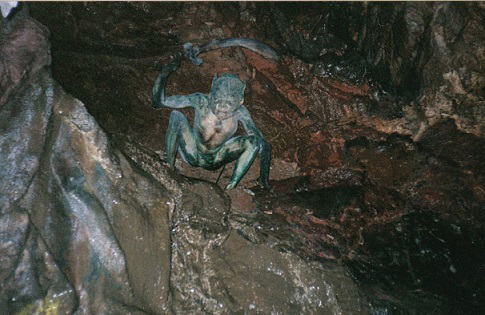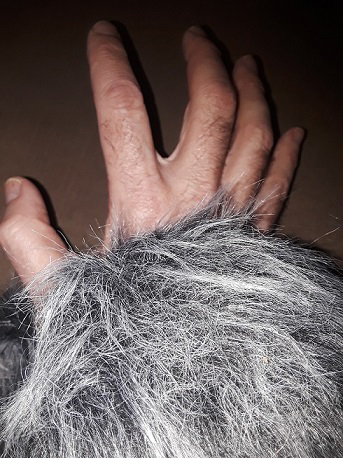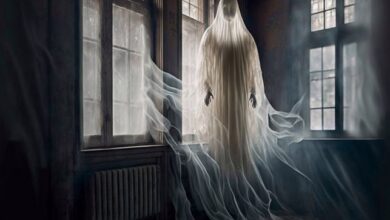Creepy Creatures Below the Depths of London?

The U.K.’s famous London Underground serves commuters travelling throughout Greater London, as well as select parts of Buckinghamshire, Hertfordshire, and Essex. It can also claim the title of the world’s oldest underground system of its type, given that it opened up for business on January 10, 1863. Today, nearly 250 years after its initial construction, the London Underground has no less than 268 stations and approximately 250-miles of track, thus making it the longest – as well as certainly the oldest – sub-surface railway system on the planet. Moreover, in 2007, one-billion passengers were recorded as having used the Underground since 1863. According to a number of select souls, however, the London Underground has played host to far more than mere tracks, trains and a near-endless number of travelers. Deep within the winding tunnels of this sub-surface labyrinth, bizarre and terrible things – many of a wild man variety – are rumoured to seethe and fester, and possibly even feed too. And British authorities are doing all they can to keep the lid on the chaos and carnage that threatens to spread deep below the streets of the nation’s historic capital city…
Stories of strange creatures – many of a definitively cryptozoological nature – lurking in the London Underground have circulated for years, and chiefly in fictional, on-screen format. Such examples include (A) the 1967 production of Quatermass and the Pit, in which bizarre, mutated and diminutive ape men – who were the subject of advanced genetic experiments, undertaken millions of years earlier, visiting Martians – appear in the London Underground of the 1960s in the form of spectral, manifested, inherited memories; (B) The Web of Fear – a Dr. Who adventure that surfaced in the following year, 1968, that sees the doctor and his comrades doing battle with robotic yetis on the Underground; (C) An American Werewolf in London – a 1981 film in which the beast of the title feasts on a doomed, late night rail traveller; and (D) Reign of Fire, a 2002 production starring Christian Bale and Matthew McConaughey, that revolves around literal fire-breathing dragons burst forth from the old tunnels of the Underground and decimate Britain, and, eventually, the rest of the planet, too.

Some of the older tales of creature-like entities prowling the tunnels under London were incorporated into a less well known, fictionalized film. Its name was Death Line. Made in 1972, it starred horror film stalwarts Christopher Lee and Donald Pleasance, and related the saga of a collapse, in the latter part of the 19th Century, at a then new station being built at Russell Square – which happens to be a real station on the Underground. Unfortunately, when the disaster occurs, a significant number of workers – both men and women – are killed. Or, rather, they are presumed killed. And, when the company funding the project goes bankrupt, all efforts to try and dig out the bodies and give them a decent burial are quickly, quietly, and conveniently forgotten. Had the plans gone ahead, the company would have learned to its horror that the workers did not die. Instead, they found themselves trapped underground, and forced to make new lives for themselves in their permanent, sub-surface home – which they do by living on just about anything and everything, and anyone and everyone, that dares to cross their path or stumble upon their darkened abode.
And as Death Line tells it, some eight decades on, the final few offspring of the original workers are still valiantly clinging on to life. Their existence, however, is a distinctly poor one: afflicted by a host of genetic abnormalities caused by in-breeding and a lack of regular nourishment, their minds are reduced to truly primitive levels and their bodies are overwhelmingly diseased and corrupted. As for their only source of food, it comes in the form of the occasional, unfortunate user of the Underground who, if the circumstances are in their favour, they can secretly grab, kill, and ultimately, devour. Death Line is an entertaining and odd little film that seldom gets the airing it deserves, and it’s one that leaves the viewer with much to think about and muse upon when it comes to the matter of wild people living among us. There are, however, those who believe the film is more than just mere fiction; far more than just mere fiction. Some are firmly of the opinion that the story it relates is 100 percent fact – albeit, admittedly, difficult to confirm fact – and that far below the capital, primitive man-beasts roam, forage, slaughter and feed.
Before his passing in 2007, Frank Wiley told a bizarre and unsettling tale of his personal memories and investigations of a number of very weird killings on the London Underground, always late at night, in a particular period of time that covered 1967 to 1969. The killings, Wiley said, occurred on at least three stations, and were hushed up by the police, under the guise of being the unfortunate results of particularly vicious, late night muggings. In reality, Wiley explained, the muggings were nothing of the sort at all. They were far, far more horrific in nature. There were, he recalled, seven such deaths during the time period that he was assigned to the investigations. As for the particular cases of which Wiley did have personal awareness, he said the modus-operandi was always exactly the same: the bodies of the people – a couple of who were commuters and the rest hobos simply looking for shelter on cold, windswept nights – were found, always after at least 10.00 p.m., a significant distance into the tunnels, with arms and/or legs viciously amputated – or possibly even gnawed off. Stomachs were ripped open, innards were torn out, and throats were violently slashed. A definitive man-eater – or worse still, a whole group of man-eaters – was seemingly prowling around the most shadowy corners of London’s dark underworld after sunset. And it, or they, had only one cold and lethal goal: to seek out fresh flesh with which to nourish their ever-hungry bellies.
Could it have been the case that the killings were the work of a rampaging animal, possibly one that had escaped from a local, London-based zoo or a private menagerie, and that was now wildly on the loose far below the capital city? Or might the deaths have been simply due to desperate, suicidal people who threw themselves under the speeding trains, and whose remains were violently dragged into the tunnels, under the steel wheels of the racing carriages? Wiley strongly believed that neither of these scenarios provided adequate explanations. There was a further, very good reason why the deaths were not ascribed to the work of wild beasts or suicides: namely, the presence of a terrifying-looking character seen at some point in 1968 by two workmen that were repairing a particular stretch of track on the Bakerloo Line (a fourteen mile long section of the London Underground that was constructed in 1906). The savage character, stated Wiley, was a bearded, wild-haired man, dressed in tattered, filthy clothing. And with hairy hands.

When one of the workers challenged the mysterious figure with a large ratchet, the man came closer, in a weird, faltering, stumbling style. To the horror of the pair, he held his arms out in front of him, bared a mouth of decayed teeth in their direction, and uttered a low and threatening growl. The strange figure then slowly backed away, eventually turning and then suddenly running deeper into the tunnel, until he was finally, and forever, lost from view. Unsurprisingly, and rather sensibly, the fraught workmen elected not to give chase, but instead raced to the nearest police station and summoned the authorities, who, said Wiley, questioned the petrified men vigorously. Wiley further added that secret orders quickly came down to the police investigators on the case – from the British Government’s Home Office, the work of which focuses on a host of issues relative to national-security – to wrap everything up, and very quickly, too. Intriguingly, Wiley maintained that secret liaison with Home Office personnel revealed that there were unverified rumors of deeper, very ancient, crudely built tunnels – that reportedly dated back centuries, and long, long before the advent of trains, railways and such like – existing far below the London Underground. There was even some speculation they may have been constructed as far back as the Roman invasion of Britain that began in A.D. 43. Precisely who had constructed the older tunnels, and who it was that might have emerged from them to wreak deadly havoc on the Underground in the 1960s, was never revealed to Wiley’s small team of personnel.
He said something close to this: ‘Probably no-one really knew, anyway. Only that someone, like the character seen by the workmen, was coming up from somewhere, killing, taking parts of the bodies, and then they were always gone again. It all got pushed under the rug when the Home Office said so. And when the last killing I was involved in [occurred], in 1969, I didn’t hear much after that; just rumours there might have been more deaths in the ‘70’s upward. I don’t know.’ Wiley’s last comments on his controversial claims, in 2004, went as follows: “There’s more to the [Death Line] film than people know. My thought then, and which it still is today, is someone making the film heard the stories, the deaths we investigated. They had to have; the film was too close to what happened. And I think we didn’t have control of the tunnels, and someone up in the government knew. Perhaps it’s still going on. That would be a thought.’
The London Underground’s British Museum Station closed its doors on September 25, 1933. For many years prior to its closure, however, a local myth circulated to the effect that the ghost of an ancient Egyptian haunted the station. Dressed in a loincloth and headdress, the figure would emerge late at night into the labyrinth of old tunnels. In fact, the story gained such a hold that a London newspaper even offered a significant monetary reward to anyone who was willing to spend the night there. Somewhat surprisingly, not a single, solitary soul took the newspaper up on its generous offer. The story took a far stranger turn after the station was shut down, however. The comedy-thriller movie, Bulldog Jack, which was released in 1935, included in its story a secret tunnel that ran from the station to the Egyptian Room at the British Museum. The station in the film is a wholly fictional one dubbed Bloomsbury; however, the scenario presented in the film was specifically based upon the enduring legend of the ghost of British Museum Station.
Oddly enough, on the exact same night that the movie was released in British cinemas, two women disappeared from the platform at Holborn – which just happened to be the next station along from the British Museum. Strange marks were later found on the walls of the closed station, and more sightings of the ghost were reported, along with weird moaning noises coming from behind the walls of the tunnels. Not surprisingly, tales began to quickly circulate to the effect that the police had uncovered some dark and terrible secret – about a paranormal killer on the tracks – that had to be kept hidden from the populace at all costs. In other words, there was a strange, yet eerily-similar, precursor to the 1960’s recollections of Frank Wiley, one that predated his own experiences by more than three-decades.
London Underground officials were, for a significant period of time, forced to dismiss the story, and there has always been an outright denial on the existence of a secret tunnel extending from the station to the museum’s Egyptian Room. Nevertheless, the story was resurrected in Keith Lowe’s novel of 2001, Tunnel Vision, in which the lead character states, while trying to both impress and scare his girlfriend at the same time: “If you listen carefully when you’re standing at the platform at Holborn, sometimes – just sometimes – you can hear the wailing of Egyptian voices floating down the tunnel towards you.” Might the loincloth-wearing “Egyptian” actually have been one of Frank Wiley’s savage underground cannibals? And, if so, were the tales of a police cover-up an indication that officialdom may have secretly known about the capital city’s wild men for far longer than even Wiley could have guessed?

In some respects, the story of Frank Wiley eerily parallels that of a man named Colin Campbell, who maintains that while travelling home on the London Underground in the mid-1960s, he had a nightmarish encounter with a very similar beast. According to Campbell, it was late at night and, rather surprisingly, he was the only person to get off the train at its scheduled stop on the Northern Line. As the train pulled away from the unusually deserted and deathly and eerily silent platform, and as Campbell made his way towards the exit, he claims to have heard a strange growl coming from behind him. He quickly spun around and was shocked to see a large, hairy ape-like animal lumbering across the platform towards the track, and seemingly mumbling to itself and no-one else as it did so.
Most bizarre of all, however, the beast was definitively spectral, rather than flesh and blood. Around three-quarters of its body were above the platform, while its legs were curiously near-transparent and, incredibly, passed right through the platform. Campbell further asserts that as he stood in awe, too shocked to even try to move, the beast continued to walk through the concrete, right onto the tracks, and then straight through the wall directly behind the tunnel – all the time paying absolutely no attention to Campbell in the slightest.
Are savage, devolved humans really living – in literal cannibalistic-style – deep under London? And are the old tunnels really home to ghostly ape men of the type encountered by Colin Campbell back in the 1960s? Or are such tales simply borne out of legends provoked by the likes of Dr. Who and Quatermass and the Pit? If not the latter, then some might say that such accounts have a significant bearing upon the reports of the British wild man – particularly if the creatures have found ways to exit the tunnels from time to time, and have made their way around select portions of the city, and the surrounding countryside by the camouflage of a dark and disturbing night. Of course, I have to stress that I cannot verify any of this, aside from the fact that the people involved in the stories were real, living people. But, unfortunately, that – of course – is simply not enough. Maybe, though, one day things will change.




